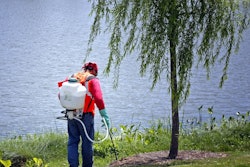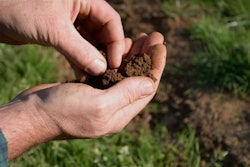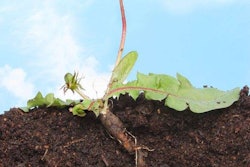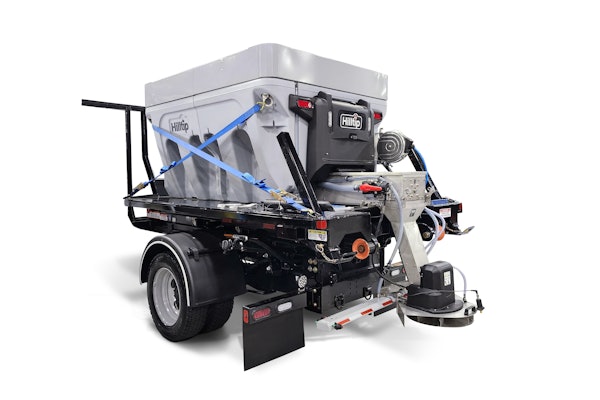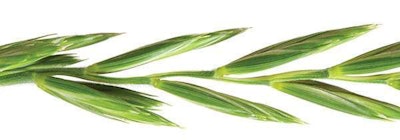
It’s hard to be selective when taking perennial ryegrass out of the mix.
There are many good uses for ryegrass. No other grass is faster at providing a quick pop of green. It’s prolific. In southern states, this cool-season grass is often overseeded on warm-season turf to provide a green lawn during winter. In cooler climates, ryegrass can serve as a permanent lawn. It’s versatile and adaptable. It has good disease and insect resistance. It even tolerates shade.
These are all good traits for turf, except when you don’t want ryegrass in your lawn. The characteristics that make it a desirable option are the same ones that make it so difficult to purge, especially if you live where there aren’t especially harsh summer temperatures to help.
Annual ryegrass is more compliant than its counterpart, perennial ryegrass. There are some pre-emergence herbicides (pendimethalin, prodiamine) that can help you transition annual ryegrass from turf. Perennial ryegrass, by contrast, presents more of a challenge because there are far fewer tools from which to choose, and no selective herbicides can do the job. If you want to take down perennial ryegrass, you have two options: a non-selective herbicide like glyphosate or a shovel.
In it to win it
The good news is that perennial ryegrass is not really an invasive weed, certainly not in a lawn environment. It’s not one of those plants that goes to seed in a lawn, according to Peter Landschoot, Ph.D., professor of turfgrass science at The Pennsylvania State University.
“It’s either being planted in lawns or was planted in the past and has somehow gained an advantage,” Landschoot says. It can over-compete and take over a lawn, even when it’s planted as a small part of a seed mix, which is often the case. Many seed mixes will include ryegrass in some amount, even as little as 10 percent, for its quick-green qualities.
“I’ve seen situations before where lawns have been seeded with an OK mix, and for years, the lawn performs fine. But have a few bad summers or winters, and certain grasses predominate more than others,” Landschoot says. “A lawn is an ecosystem and is constantly changing. If you plant with three grasses, you’ll never retain the same amount of each. It will always go back and forth between species. In addition to that, you start to get certain types of grasses segregating.
“You’re dealing with a long-term perennial ecosystem, and things are going to change; some bad and good will happen,” he says. If, for some reason, these clumpy, coarse turfgrasses have gained an advantage, it’s all part of the process, and it’s likely because of the weather.
Taking out the grass
One reason your clients are going to complain about perennial ryegrass as a weed is because it’s green when the turfgrass surrounding it is not, which definitely draws attention. In addition, it will grow faster than the other turf, also making it stand out.
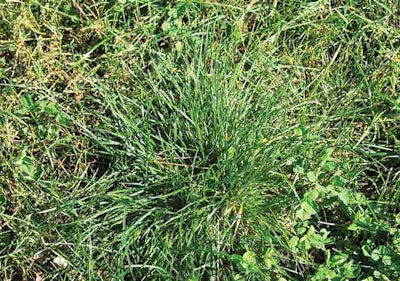 Even if your client hasn’t planted perennial ryegrass, it could like dormant in the soil for years, waiting to pop up when the perfect conditions are present. Photo courtesy of Bob Mugass, U of MN
Even if your client hasn’t planted perennial ryegrass, it could like dormant in the soil for years, waiting to pop up when the perfect conditions are present. Photo courtesy of Bob Mugass, U of MNIf your client is willing to be patient, though, the ryegrass eventually can blend in with other grass if you can keep it mowed on a consistent schedule.
“When the other grasses start to come in, it starts to blend in. By May, you don’t notice it anymore,” Landschoot says.
This can be an especially good option if you have perennial ryegrass in patches throughout the lawn, given that the only other options for control are more severe.
If you or your client want to get rid of perennial ryegrass for good, spot treating with a non-selective and suffering through the wait with some bare batches is your only chemical option.
“There is no pre-emergence herbicide that is going to take it out,” Landschoot says. “The only thing that ever worked on perennial ryegrass (Nufarm’s Corsair, a chlorosulfuron used to eliminate undesirable clump grasses like ryegrass), was voluntarily taken off the market. Since that has been removed from our arsenal, there is nothing selective that will take it out.”
If you decide to spot treat with glyphosate, Landschoot recommends doing it late spring (around the end of April).
“If you have patches all over, you may as well just clear it and start over,” he says.
If you’re waiting for extreme temperatures to help knock it out, don’t, unless you live in the southern states. The temperatures don’t get hot enough in the north to do the trick, not even normally in the Midwest.
Mixing it up
The best defense against ryegrass in turf is to not get it started in the first place.
“Even if a mixture says it contains only 10 percent rye, that’s a lot of plants,” Landschoot warns.
Also. be leery of seed packages where the variety is not stated. If your client is the type who likes to get out in the spring or fall and throw seed, it may be a good opportunity to invite him or her to consult with you so that you can evaluate the seed first. It could also be the encouragement your client needs to let you handle the seeding. At the very least, it will increase your implied value and expertise to your client.


